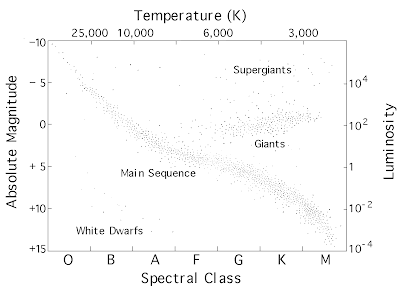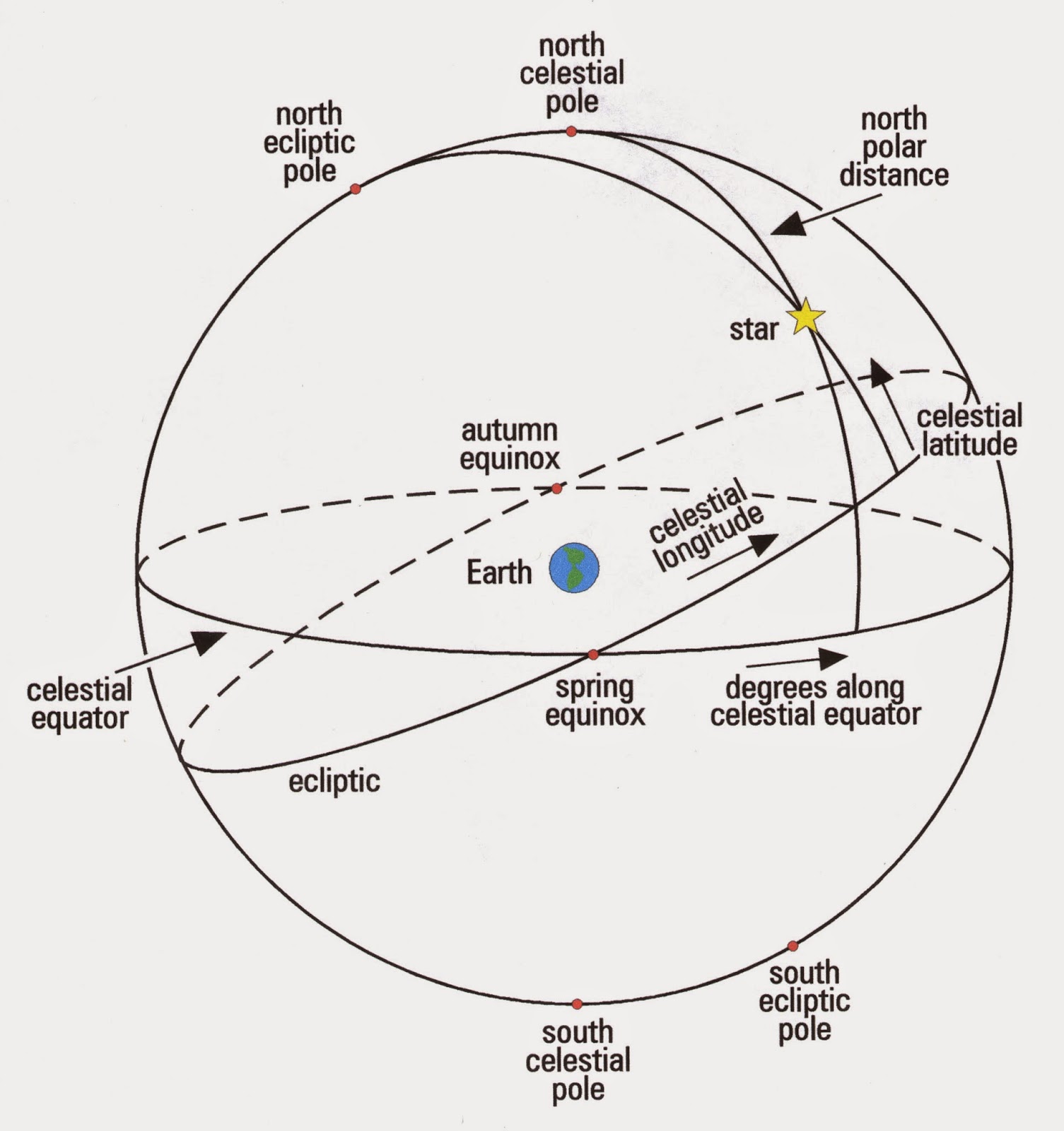Star Types

There are 4 fundamental forces of nature: Strong nuclear - this keeps protons close together Weak nuclear a responsible for radioactive decay Electromagnetism - light, electricity, magnetism, etc Gravity - weakest of all, but furthest reaching A star (Latin root stella-) is essentially a ball of gas powered by nuclear reactions, held together by gravity. Stars may appear white, but their color is a combination of many colors (and non visible e-m waves like UV). Spectral types are listed in order of decreasing temperature: O B A F G K M with a temperature range from 60,000 K down to under 3500 K. There are further subdivisions (C and S stars under M). You can learn a lot about a star from where it lies on the Hertzsprung-Russel diagram. The H-R diagram plots magnitude (brightness, from dim to bright) vs. temperature (high to low, usually as spectral type). Hottest stars are on the left if the graph - they are normally brighter than cooler stars. Most stars fal

